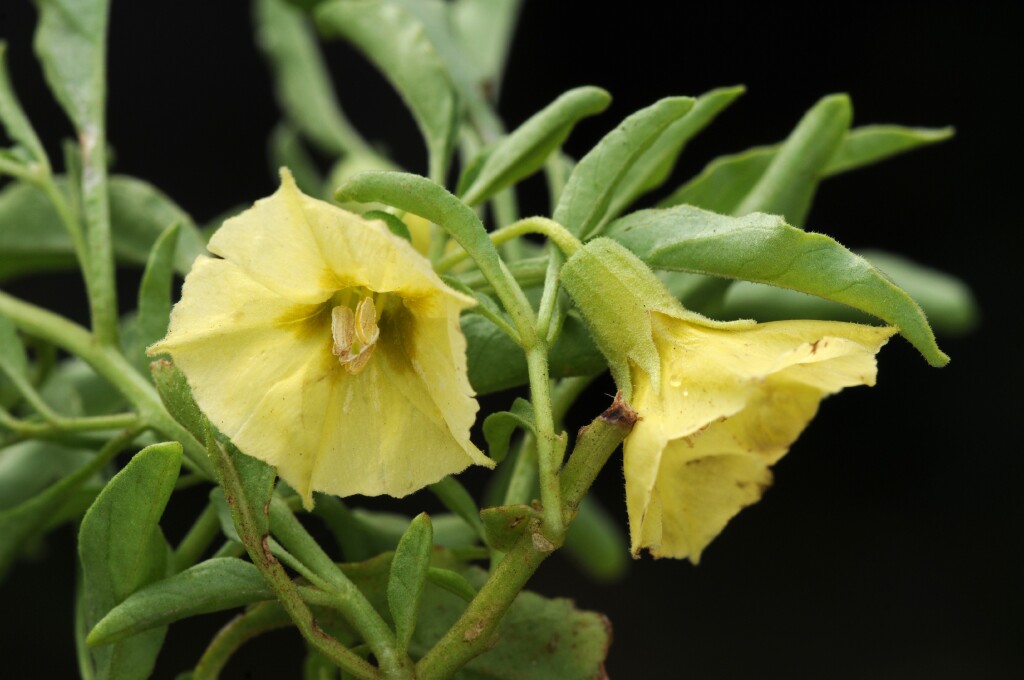Physalis hederifolia
A.GrayPerennial herb 15–40(–50) cm high, rhizomatous, sparsely to moderately pubescent (more dense on new growth), a variable mixture of minute forked hairs (at least on margins of calyx) which varies from very few to many (absent in one Victorian collection), and with simple hairs (which are sometimes the predominant hair type, rarely the only hair type present), with or without occasional 3-branched hairs, the hairs 0.05–0.2 mm long, sessile or subsessile glandular hairs of variable abundance sometimes present. Leaves alternate, sometimes opposite or subopposite at apex of shoot, lanceolate to ovate-lanceolate (15–)20–60 mm long, (5–)10– 40 mm wide, apex obtuse, base cuneate, margins entire, usually sinuate or sometimes coarsely toothed, lower surface of the leaf usually sparsely hairy, the upper surface of the leaf is more or less glabrous; petiole 10–22 mm long, narrowly winged above. Pedicels (at anthesis) 7–12(–32) mm long. Calyx 6–10 mm long, lobes triangular, 2–4 mm long. Corolla rotate or 5-angled, 11–15 mm long, pale yellow, often blotched olive-yellow towards base; corolla-limb sometimes reflexed at maturity. Anthers 2.8–4 mm long. Style 9–10 mm long, stigma capitate. Fruiting calyx 10-angled, 15–20(–33) mm long, dull yellow to orange, drying pale brown or straw-coloured, loosely enclosing berry. Berry globose, 10–15 mm diam., orange, viscid, sweetly fragrant. Seeds lenticular, 1.7–2.3 mm long. (Description based on Victorian plants). Flowers spring–autumn.
MuM, Wim, VVP, VRiv, MuF, GipP, OtP, WaP, Gold, CVU, NIS, EGL, HSF, HNF, OtR. MuM, Wim, VVP, VRiv, MuF, GipP, OtP, WaP, Gold, CVU, NIS, EGL, HSF, HNF, OtR. Also naturalised WA, SA, NSW. . Native to southern U.S.A and northern Mexico. . Widespread, particularly in dry inland areas where found near cultivation and other disturbed sites.
Victorian plants have in the past been referred to P. viscosa, and some authorities maintain this is the preferred name, but the general consensus in Australia follows advice from the north American authority, J. Sullivan.
 Spinning
Spinning



